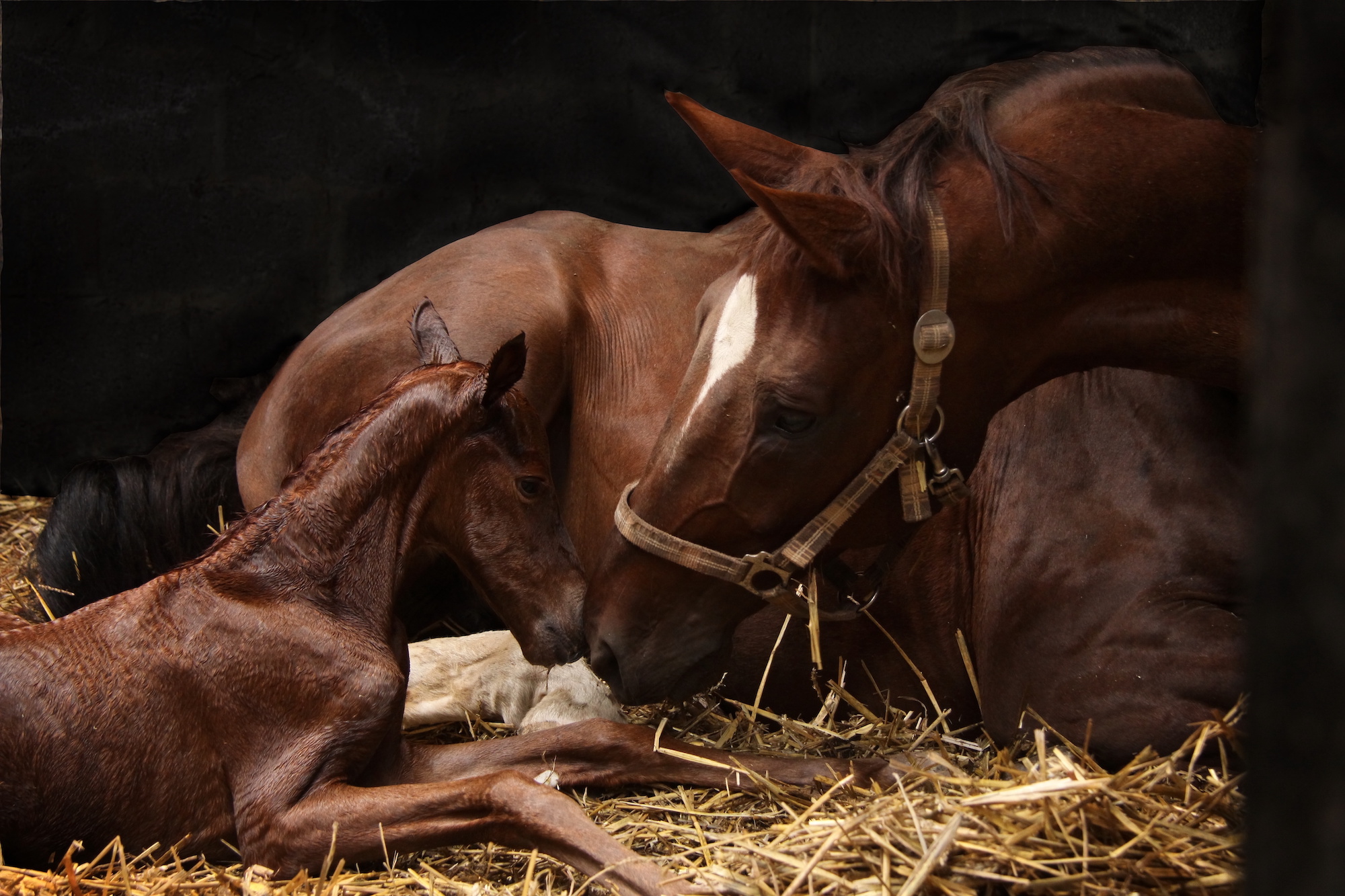Hemp oil has similarities to the fats found in uterine fluid of pregnant mares

For around 14 to 16 days after a mare has been successfully bred, the fertilised embryo freely floats between the fallopian tubes and the uterus until it finally grows big enough to implant or fix to the uterine wall. At this point, the embryo grows finger-like protrusions called villi that not only anchor the embryo to the uterine wall but also attaches itself to its mother's blood supply and lymph duct system. These are the now growing foal's nutrient and blood sources as well as the excretion system for all the metabolic wastes it makes.
Researchers and veterinarians have long looked at the multitude of complex physiological functions involved in the conception and growth of the equine foal. Hormonal secretions and roles, physical contractions and changes, dietary requirements, etc., have all been studied with the aim to try and improve the chances of getting a new born foal. Prior to successful implantation, the travelling embryo uses the fluids found in the uterus and oviducts for nourishment. Not only does the embryo use these fluids to survive and grow, but it also utilises them to provide "maternal recognition" to the mare to say "hey, you're pregnant".
A group of scientists in Switzerland* studied the fatty acid profile in the blood, uterine and oviduct fluid of mares from conception through to the late luteal phase (about day 18 after conception). What they found was a mixture of linoleic (omega-3), linolenic (omega-6), oleic, palmitic and stearic acids (fats) in both the blood and reproductive fluids. Most interestingly, they found higher concentrations of three specific fats in the reproductive fluids – Arachidonic, eicosapentaenoic (EPA) and dihomo-gamma-linolenic acids.
Industrial hemp not only contains oleic, palmitic and stearic acids, it also contains the precursors for the three fats found in the reproductive fluids. Alpha (α)-linoleic acid (ALA) is readily converted in the body into EPA while Gamma (γ)-linolenic acid (GLA) can be converted into both arachidonic and dihomo-γ-linolenic acid. It is suggested that the specific fatty acids found in the reproductive fluids are designed to not only provide the necessary nutrients for the embryo to survive and grow, but to also protect the developing foetus against any possible inflammation within the uterus.
This research would suggest that the fatty acids found within the mare's reproductive tract have a significant influence on the growth, development and survival of the fertilised embryo. This is another demonstration of the benefits of feeding a quality oil product like that found in industrial hemp which is rich in ALA and GLA.
Ananda Equine are producers of high quality, industrial hemp based nutritional products for horses. Designed to provide the essential nutrients a horse needs in its diet, Ananda Equine feeds also help provide good health for your horse through quality fermentable fibres, low sugars and starch, and essential nutrients that many other feeds cannot, like GLA.
Ananda Equine – Healthy Horse Feed, Naturally!
* Drews, B., et. al. (2018), Fatty acid profile of blood plasma and oviduct and uterine fluid during early and late luteal phase in the horse, Theriogenology. 114:258-265
- Dr Mark Barnett PhD
- Equine Nutritional Consultant
- MTB Equine Services
- mtbequine.com